AA-Sport > Basketball > If you are not good at fighting a tough battle? Why did Alexander, the Thunder, decline sharply in the playoffs?
If you are not good at fighting a tough battle? Why did Alexander, the Thunder, decline sharply in the playoffs?
Although the Thunder defeated the Nuggets to tie the score in the crucial fourth game, Alexander's performance of 8 of 19 shots and 25 points still cannot be compared with him, who was defeated in the regular season. So why did the Thunder's new king Alexander decline sharply in the playoffs? This issue of the column will help you understand through in-depth data analysis.
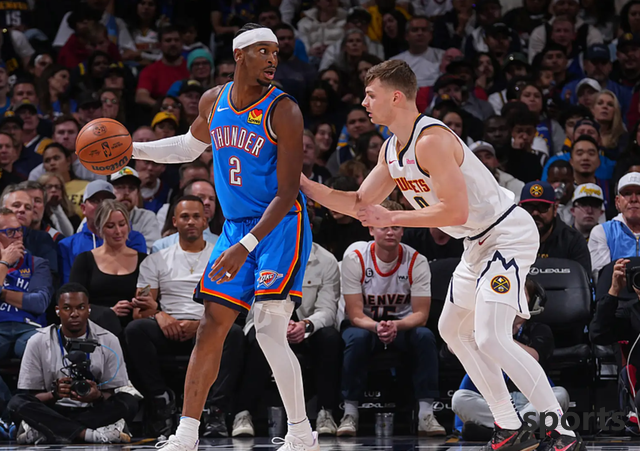
Alexander averaged 27.6 points per game, ranked sixth in the league, with shooting percentages of 43.6% and 23.4% respectively in the two games. Although this performance is still the top scorer in the league, compared with his regular season averages of 32.7 points, 51.9% and 37.5% per game, it has dropped too much. Moreover, the opponents faced by the Thunder in the two playoffs are the Grizzlies and the Nuggets. These two teams are actually not the overall defensive efficiency, which is the team with the least points per 100 rounds. Therefore, Alexander, whose scoring ability in the playoffs, has also been questioned a lot. So why did Alexander experience such a decline? Is it really not good to fight hard?
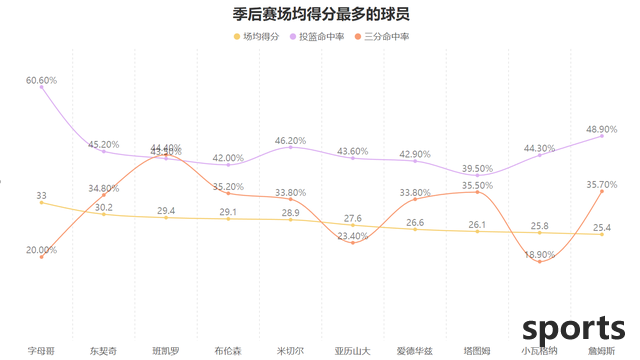
From the perspective of offense outside the three-point line, Alexander's score assist rate in the playoffs has declined a lot compared to the regular season, which means that in the playoffs, Alexander scored fewer three-pointers when receiving and passing the ball to his teammates. Of course, this may not be that his teammates did not pass the ball to him in the playoffs:
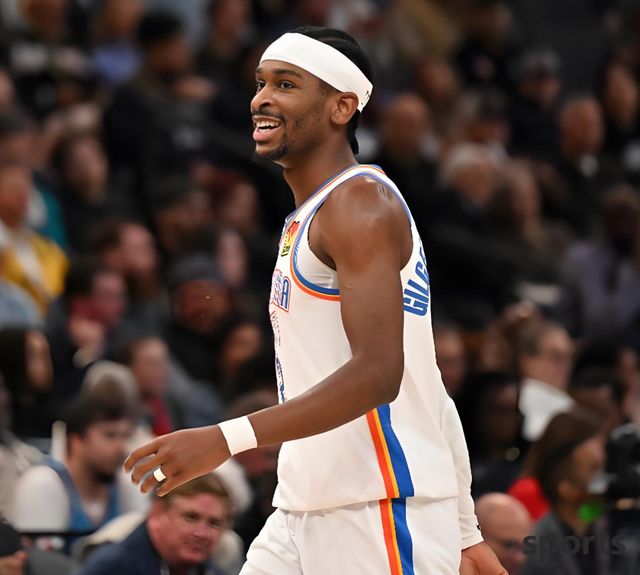
From the perspective of shooting proportion, Alexander's three-pointers when receiving and taking and dribbling the ball, still 16.7% of the three-pointers when receiving and dribbling the ball, which accounted for 17.5% of the regular season, and there is no big change, but more than 7 dribbling three-pointers when dribbling, which means that Alexander actually mainly takes the dribbling rhythm and completes three-pointers when taking and dribbling, and the shooting method has not changed much.
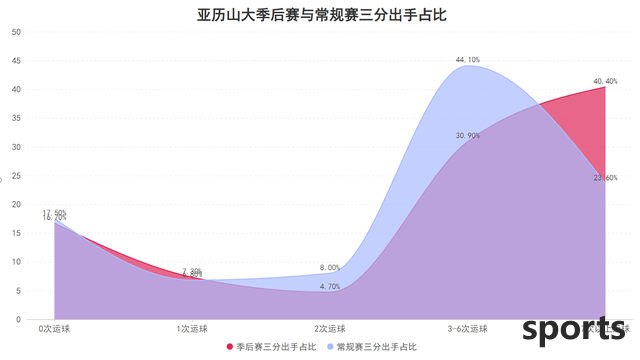
But the difference is that Alexander's shooting percentage in the playoffs has changed a lot. His three-point shooting percentage after dribbling 0-2 times is 0. It can be said that he missed a goal. You should know that Alexander himself is a player who needs to control the ball for a long time to find the offensive rhythm. In the regular season, he can also try to play the role of an unball shooter, but in the playoffs, his three-point shooting was cut in half, and his already unstable catch shot showed a cliff-like decline, which seriously affected his overall three-point shooting. Alexander within the three-point line is his best area, but the dribbling shooting percentage in the playoffs has shrunk to varying degrees compared to the regular season. His shooting percentage after 3-6 dribbling times has fallen below the 50% mark. Such changes will occur not only because of his personal competitive state, but the opponent's defensive strategy has become the key.
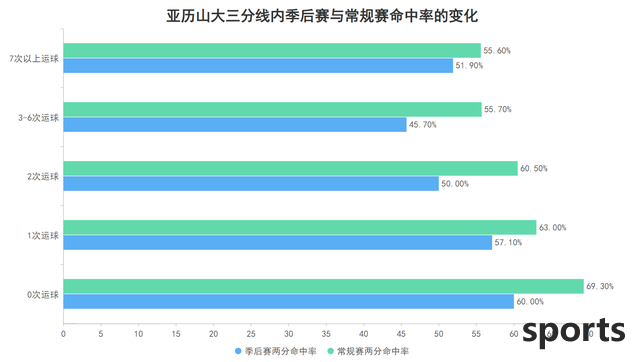
When Alexander in the regular season shoots within the three-point line, he will have different shooting rates when facing different defensive distances, especially the defender's close defense within 2 feet of himself, his shooting rate has dropped to 43.8%. Therefore, Alexander's offensive method actually relies on techniques such as ball-holding dribbling and slightly opens up the shooting space, which is easier to cause opponents to foul, and also enables him to achieve the best efficiency;
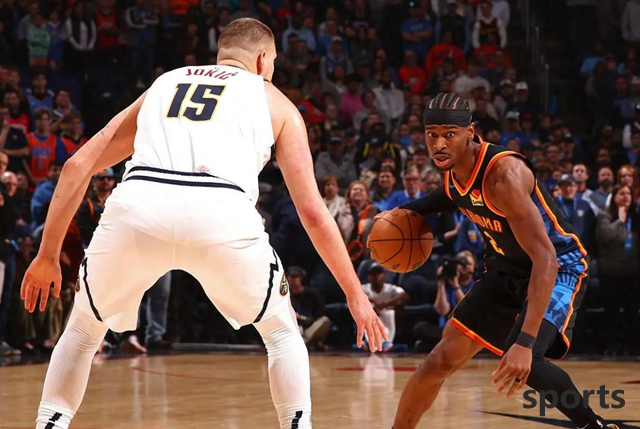
However, in the playoffs, the penalty scale is more relaxed and encourages confrontation. The opponent is obviously more targeting this feature to enhance confrontation, making his shots not as comfortable as the regular season. The longer the defense distance faced by Alexander in the playoffs, the higher his shooting percentage will be. When facing defense within 2 feet, the shooting percentage will drop to 28.6%. The change in the penalty scale will be more intense against the opponent, making his singles no longer as stable as before.
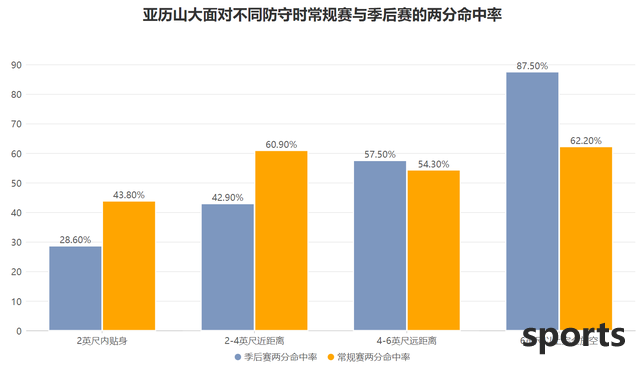
Judging from the shooting situation of Alexander facing various opponents in the playoffs, Bain, Jaren Jr., Aldama and Westbrook of the Nuggets have lower hit rate, and his shooting rate is higher against Braun, Pippen Jr., Jokic Jr. and Murray. From this perspective, it can also be seen that Alexander's score is more likely to be affected by which type of players:
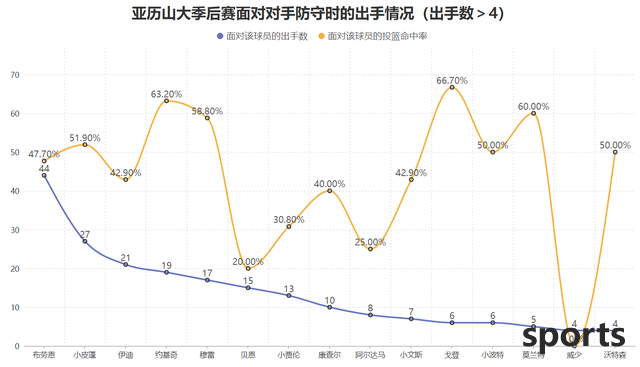
When facing opponents with slower movement or slightly less confrontational ability, Alexander can have a higher finish success rate; when facing opponents with flexible movement and physically against stronger opponents, his finish success rate is relatively lower.
Related Posts
Trail Blazers official: Team will travel to Salt Lake City
BasketballReported by the Trail Blazers official account, from the perspective of Torn City. PDX✈SLC RipCityviews.PDX✈SLC Mini-game recommendations: Ball vs Blocks...
morePelicans official announcement! Looney has sprained his left knee ligament and will be sidelined for at least 2-3 weeks. The old player once said that the Pelicans were cursed.
BasketballOn October 16, the Pelicans suffered another injury. The team's new aid Looney was determined to be injured for at least 2-3 weeks. The New Orleans Pelicans officially announced that Kevin Looney was diagnosed with a sprain of the proximal tibio...
moreIf Shepard is traded after 20 games, Udoka will definitely choose between Whitehead and Holiday.
BasketballThe Rockets are basically certain that Shepard will enter the starting lineup and may give him 20 games. If that doesn't work, the Rockets will make a decisive trade. Udoka should prefer White or Jrue Holiday. White and Jrue Holiday won a champi...
more
Hot Posts
- Warriors: Petition Seth Curry to become the number one jersey sales in the season
- Congratulations to the Lakers! The forward line is traded, and it would be perfect to trade Reeves for Avdia
- The curtain of the NBA in the new season is about to kick off, and the heroes compete for the destiny
- Lakers General Manager Robert Pelinka was interviewed and responded positively to various speculations surrounding LeBron James recently
- US media commented on the strongest player every year in the 21st century: James dominated in 8 years, O Pang Kobe Jokic dominated in three consecutive games
- Only 505 points away, this 51-year NBA record will be broken by Westbrook in the new season
- The Lakers are really ungrateful! If James hadn t joined, the Lakers Dynasty would have collapsed long ago
- HG08 2025 NBA Finals: 4 Things to Watch in Game 6 of the Finals
- Young Hero! Jaylenway scored 40+ in the finals in the first three years of his career. In 2006, Wade s first player
- G1 in the Eastern Conference Finals made a shocking comeback! Brunson scored 40+, but he said this when interviewing him after the game!
Recent Posts
-
In 2019, the Clippers exchanged 9 for 1 and sent Alexander, how did they develop later?
-
Shen Jing matches Antetokounmpo? The Rockets improve their inside advantage! Potential partners average 54 points per game to fight against the Warriors
-
Password of the male lead in cool writing: How did Rich Paul counterattack from a hawker to a top sports agent?
-
The Rockets refused to send out several new stars, and the Suns focused on the next young player?
-
Former Bucks defender may join Xinjiang? Selected for the World Cup qualifiers. The biggest problem is projection
-
Tens of billions of dollars change hands! The Bass family withdraws from the Lakers, and an era in the NBA ends
-
The big upset! The number one in the Eastern Conference fell down! The dark horse won the match point 3-1, Mitchell only scored 12 points
-
Is the CBA offseason ticket coming? Guangdong and Xinjiang may be severely punished: But Zhejiang has become the biggest winner?
-
The reason why the Lakers were swept by a gentleman was exposed! The Warriors Five Redick only learned the superficial
-
A choice without any suspense! Is Xinke Tanhualang capable of becoming the best partner around the core of the 76ers?